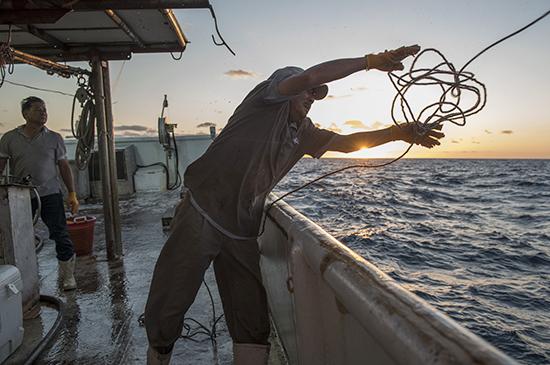Review of Project Years
The Deepwater Horizon Oceanic Fish Restoration Project has successfully helped to restore fish in the Gulf thanks to participation from area pelagic longline fishermen who have helped reduce fishing pressure on pelagic fish species.
Participation
Since 2017, members of the pelagic longline fishing industry have been active partners in the implementation and adaptive management of the project. Participation in the project has grown as fishermen help to secure the sustainability of this fishery.
In the 2017 project year, seven vessel owners from Louisiana participated in a four-month pelagic longline repose from March 1 through June 30. Participants fished using greenstick gear for a collective total of 280 sea-days.
In 2018 through 2021, the repose period took place from January 1 through June 30. In the 2018 project year, seven vessel owners from Louisiana and three vessel owners from Florida participated in the repose. In the 2019 project year, eight vessel owners from Louisiana and two vessel owners from Florida participated in the repose. In the 2020 project year, repose participants included seven vessel owners from Louisiana and five vessel owners from Florida. In the 2021 project year, repose participants included seven vessel owners from Louisiana and four vessel owners from Florida.
Participants used greenstick, buoy, and deep drop rod and reel gear for almost 500 sea-days in 2018, more than 500 sea-days in 2019, and more than 650 sea-days in both 2020 and 2021.
Outcomes
Data collected by NOAA from the 2017-2019 project years show clear bycatch benefits; the project is on track to meet restoration goals to reduce fish mortality and help restore more than 60 species of pelagic fish in the Gulf. Although alternative gear was found to have lower catch rates than pelagic longline gear, almost 90% of all fish discarded from alternative gear were released alive.
Participants have provided positive feedback about the project:
“I found it very rewarding to be a part of the research and experiment with the new gear, as well as to be a part of something that could help restore fish in the Gulf,” one participant said.
According to another participant: “I am very invested in helping make alternative gear more effective for future generations of fishermen.”
NFWF and NOAA are excited about the future of this project based on the successful outcomes during the previous project years.
